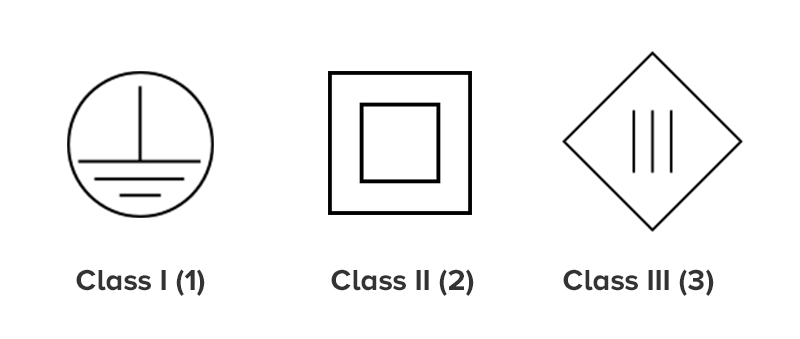Examples Class 1 Electrical Appliances

All electrical appliances using mains voltage have to provide at least 2 levels of protection to the user.
Examples class 1 electrical appliances. Examples of class iii appliances are laptops mobile phones and low energy light bulbs. It also follows another standard ul 1310. The point is you need to look at the markings on the appliances the flex used and inside the plug to determine what class an appliance is. If the appliance is in a metal enclosure like an electric fire or a washing machine then it is relatively easy to clip the earth test lead to a metal point.
However equipment of this class is common in some 110 v countries and in much of the 220 v developing world whether permitted officially or not. Class 1 appliances are as follows. The class 2 label is related to power supply not safety. Examples of class 1 equipment are kettles toasters irons microwaves electric heaters fridges freezers washing machines and tumble dryers etc.
Class iii appliances are identified by the class iii symbol. There is no symbol for class 1. Of course you could look inside the plug a class 2 appliance should only have 2 wires brown and blue whereas a class 1 will have 3 wires brown blue and green yellow however it is not unusual to find appliances which have been rewired or modified bodged with the wrong cable so the only way to. A typical example of a class 0 appliance is the old style of christmas fairy lights.
Some examples of class 1 appliances are toasters kettles washing machines and irons. With class 1 appliances the user is protected by a combination of basic insulation and the provision of an earth connection thus providing two levels of protection. I have come across a few instances of a two core extension lead powering a desk complete with computers monitors printers etc. The symbol for class i items looks like this and should be found somewhere on the appliance.
These appliances are known as double insulated due to the presence of at least two layers of insulation. Class 2 equipment has supplementary insulation and therefore does not rely on an earth for protection and is easily identified by the double square symbol and will receive an insulation test. Any appliance with 3 core cable live neautral and earth cable. When pat testing class 1 appliances earth continuity and insulation resistance tests are carried out.
This is to ensure that if one of the protection layers were to fail there is the back up of the second layer still in place. It is not a simple as it s an extension lead therefore it is class 1 etc. Typical class 1 items toasters kettles washing machines irons and many more. If it is made of metal it must be a.
Class iii appliances use an isolating transformer. These appliances do not have their chassis connected to electrical earth.














































